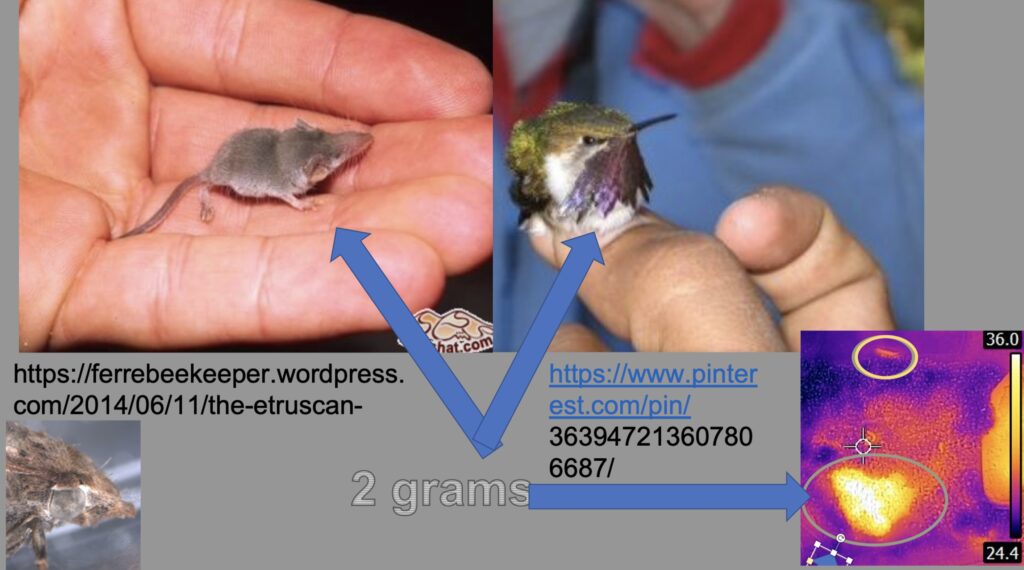We learn best by doing rather than just seeing and hearing. The more we are involved in a learning process, the more we will gain from their educational experience. This axiom is clear to me after decades of teaching, and I keep trying to upgrade my teaching to rise to ever-increasing student/learner involvement.
In Fall 2024, I taught a class in insect rearing for first year life science students here at North Carolina State University.* Here is a sample of one of the slides in a presentation I did on metabolism of waxworms (Galleria mellonella) and how they use lipids and carbohydrates to generate elevated body temperatures.
From this image, FIRST YEAR students were able to write paragraphs explaining their understanding of how metabolism, size (accomplished here by larval aggregations), and insulation (accomplished by the waxworms with silk) could permit what we normally consider “cold-blooded” creatures (insects) to become warm-blooded. What I learned from the interactive paragraphs between the students and myself was that we could conduct a productive discussion that guided the “entry level” students to understand how the concepts behind metabolism, behavioural actions, structural adaptations such as fur, feathers, and silk could lead to waxworms’ cultural characteristics (their success in speeding their development, avoidance of predators and parasites, and many other advantages of making themselves warm.
The main point of this discussion is that the kinds of success we had with extensive student/teacher interactions was a much more efficient and enjoyable learning experience. Having learned this lesson from my freshman students, I vowed to apply it to all my teaching–including my online classes. Please look for future discussions of my interactive teaching ideas in post to come shortly.

